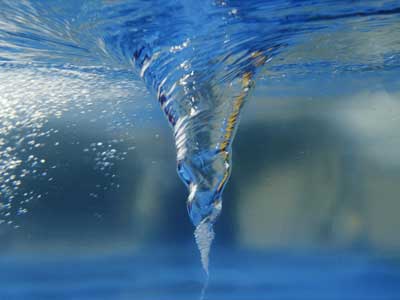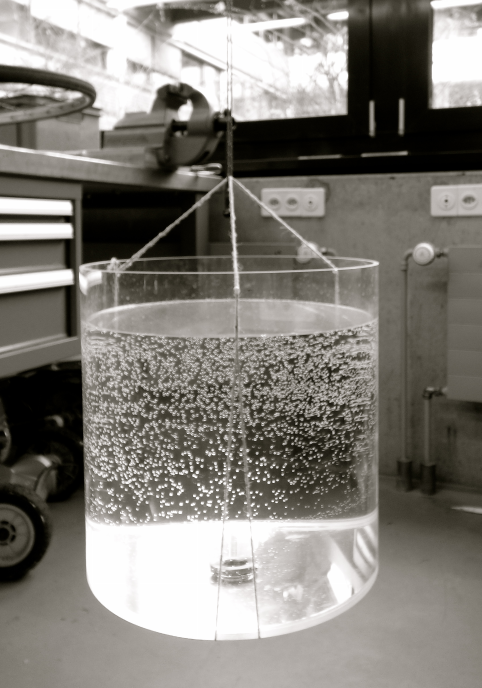Value
The bathtub vortex is one of the most familiar fluid dynamical phenomena. The appearance of intense and concentrated swirl motion in a liquid which initially seems quiescent is surprising at first, since it seems to defy basic conservation laws. After detailed investigations, the physical origin of its appearance is still unclear[1]. There are two candidates as the source of the apparent violation of angular momentum conservation [1,2,3]: (1) imperceptible but non-zero rotation in the initial condition (possibly including earth’s rotation) becomes notorious swirl when concentrated in less fluid, and (2) a perfectly axisymmetric flow is unstable and the vessel, through the viscous boundary layer, provides the torque necessary to set in the swirling motion. Both mechanisms are not mutually exclusive. While the initial conditions in (1) seem very likely to determine the sense of rotation of the bathtub vortex, the the possibility of angular momentum transfer through the vessel walls in (2) remains to be fully explored.

During a previous semester project, a cylindrical vessel was hanged from a long cable, as shown in the figure below, so that it could rotate in response to its angular momentum exchange with the water. It was observed that the vessel turns in the same direction as the vortex and that the vortex is more intense than when the vessel is fixed, thus discarding in this case the possibility (2) of an instability that feeds angular momentum to the vortex from the walls. The present project includes 3 important extensions to the previous study: implementing a system to open the vessel discharge without perturbing it, visualizing the flow structures by using a rheoscopic fluid, and changing the vessel to explore different geometries that could sustain an intability. The last point is of particular interest since it is possible that a non axisymmetric vessel could sustain instabilities [4].

[1] V. Shtern and F. Hussain, “Collapse, symmetry breaking, and hysteresis in swirling flows,” Annu. Rev. Fluid Mech. 31, 537 (1999)
[2] P. Tyvand and B. Haugen, “An impulsive bathtub vortex,” Phys. Fluids 17, 062105 (2005)
[3] R. Fernandez-Feria, “Stability analsis of boundary layer flow due to the presence of a small hole on a surface,” Phys. Rev. E 65, 036307 (2002)
[4]V. De Felice, “Il vortice a superficie libera in quanto instabilità”, PhD Thesis (2007).